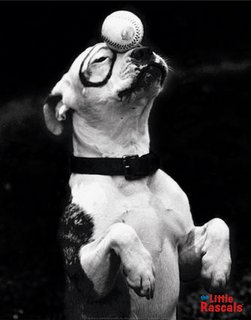

 The Accurate Reloading Forums
The Accurate Reloading Forums  THE ACCURATE RELOADING.COM FORUMS
THE ACCURATE RELOADING.COM FORUMS  Guns, Politics, Gunsmithing & Reloading
Guns, Politics, Gunsmithing & Reloading  Gunsmithing
Gunsmithing  Suggestions for tight-necked 6.5-284 Norma
Suggestions for tight-necked 6.5-284 NormaGo  | New  | Find  | Notify  | Tools  | Reply  |  |
| one of us |
I've posted this in reloading, but thought I'd try here too: I'm getting Manson to make me a chamber finishing reamer for 6.5-284 Norma. What are your suggestions for the diameter of the chamber where it has a tight neck? (0.297" would be about standard) What is the best clearance between the neck of the chamber and the brass? 0.001" all around ie 0.002" smaller diameter for the loaded round? Or perhaps 0.0015" giving 0.003" total? | ||
|
| one of us |
Reamer neck dia. of .291 works for a number of us that shoot 1000 yd. BR. I like .027 between bullet dia. and chamber dia. on most of my longrange wildcat reamers. I then like to turn case necks to about .0123-.0125 wall thickness. It is very handy to have a short pc. of barrel that has had the chamber reamer run into it to about 90% of the shoulder. This is a gage that can be used to check loaded rounds to see if they will chamber in the rifle. Also good for determining seating depth. Many shooters prefer at least .003 clearance between loaded round neck and chamber. | |||
|
one of us |
Question for Jay, Idaho, How long does a piece of brass turned to .291 last? The reason I ask is the one and only tight neck rifle I own is a .257WSM . My gunsmith told me maximum neck thickness was .290 for it, so to be on the safe side I turn mine to .288 loaded. I don't have a lot of experience with neck turning cartridges but the walls seem awful thin to me and your going further than I am. Some of my cartridges have been fired twice, but I wonder how long they'll go with that thin neck. Does the tight chamber help preserve the cartridge? Thanks, Terry | |||
|
| one of us |
quote:TC1: I can answer that for you. The walls are thin, but they don't expand very far to release the bullet (0.003" in this case, often less). Most reloaders then use a bushing die to shrink the neck back down to reload it. This is usually only 0.001" or 0.002" less than the diameter of the loaded neck. Thus, although the neck of the brass may be very thin, it is worked to an absolute minimum. This sort of chamber and case preparation is taking the search for accuracy to the limit. | |||
|
| one of us |
Jay,Idaho: That is the sort of answer I have been looking for. I only use Lapua brass. If it is more uniform than other manufacturers', does it require less brass to be removed when neck turning? If this is the case, how thick can the necks be left? 0.012" sounds about right. Comment? | |||
|
| one of us |
My 6.5x55 target neck is .290 and I turn the necks to a thickness of .012. The sizing die sizes to .288. I think the amount of clearance, within reason, has little effect on accuracy. The close tolerances do enable you to minimize the amount of sizing necessary and make more concentric ammunition. This concentricity is the major contributor to accuracy IMO. Many years ago I shot a 6PPC with a .264 dia neck. For this rifle I had two different batches of brass. One batch had the necks turned to produce ammunition which measured .2635 with the bullet seated. This brass was used unsized. The brass would spring back enough to grip the bullet sufficiently. The other batch was turned to produce ammo with a neck dia. of .261 and was sized in a die with a .2585 neck diameter. I shot this rifle through one season using both sets of brass. At the end of the year the average for the tight necks was .3434 moa while that for the sized necks was .3432 moa. My conclusion was that it didn't make much difference. I preferred working with the smaller necks since I didn't have to be so fussy with them and I'm basically a lazy person! It seems to be possible to achieve 3/8 moa accuracy with standard sized necks (sometimes even better). At long range 3/8 moa is absolutely competitive and then some. As I mentioned, my 6.5x55 has a .290 neck. It shoots quite well and I have won some with it. I made a similar rifle for a fellow competitor. He didn't want to have to fool around turning necks so I made his with the standard dimension of .297. His rifle shoots every bit as well as mine and, sadly, he beats me often. Regards, Bill. | |||
|
| one of us |
My 6.5 X .284 Shehane has a .290" neck. Loaded rounds are .288". The brass has been fired five times so far and the necks are fine. The one thing I noticed after about four firings is the "dreaded donut's" were appearing and I had to run the cases on the K&M turner again, carbide cutting mandrel only. Brass is Norma, lot 4. -Rick | |||
|
| Powered by Social Strata |
| Please Wait. Your request is being processed... |
|
 The Accurate Reloading Forums
The Accurate Reloading Forums  THE ACCURATE RELOADING.COM FORUMS
THE ACCURATE RELOADING.COM FORUMS  Guns, Politics, Gunsmithing & Reloading
Guns, Politics, Gunsmithing & Reloading  Gunsmithing
Gunsmithing  Suggestions for tight-necked 6.5-284 Norma
Suggestions for tight-necked 6.5-284 Norma

Visit our on-line store for AR Memorabilia

